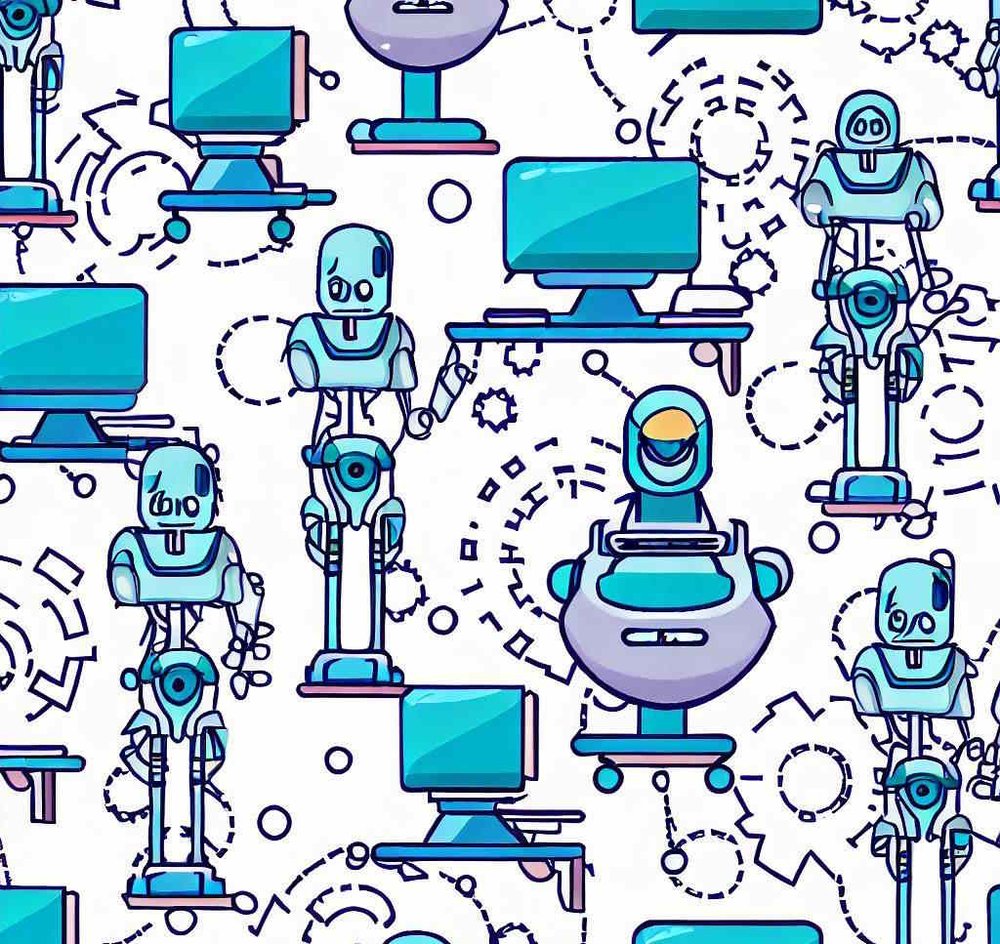Over the last few years, Artificial Intelligence (AI) has become a buzzword that’s impossible to ignore.
Generally this comes down to two types of AI:
- Predictive AI has the ability to analyse massive datasets and make educated predictions about future outcomes. For example, it’s used in predicting customer purchasing behavior, identifying potential market trends, and forecasting sales.
- Generative AI generates new content, whether it’s a piece of art, a piece of music, or even a business report.
ChatGPT: A Leap in AI Communication
Among the various AI models, OpenAI’s ChatGPT stands out.
It’s not just an AI – it’s a conversational partner that uses machine learning to generate human-like text based on the input it receives.
ChatGPT can assist with a variety of tasks, from drafting emails to answering customer queries, making it a valuable tool in any workplace. For example, a customer service representative can use ChatGPT to handle routine queries, freeing up their time to tackle more complex issues.
It’s a great example of a tool that enhances productivity rather than replacing humans.
AI and Job Security: Addressing the Elephant in the Room
But there is still an underlying question – will AI take away jobs from humans?
While it’s true that AI can automate certain tasks, ultimately it’s AI is a tool that that augment human capabilities rather than replace them.
Rather than eliminating jobs, AI can actually create new roles. As AI technology evolves, there will be a growing demand for professionals who can manage and maintain these systems.
The emergence of AI will still lead a shift in the job market, emphasising roles that require human creativity and critical thinking – areas where AI falls short.
Applications of AI in the Workplace
AI is already contributing to workplace efficiency, accuracy, and productivity.
AI in Fraud Detection
AI is significantly enhancing the ability to detect fraudulent activities, particularly in sectors like banking and finance.
Advanced machine learning algorithms can sift through enormous amounts of data in real-time, identifying patterns and anomalies that could signal fraudulent transactions. These algorithms can learn from each instance, continually improving their accuracy and speed.
AI in Cybersecurity
With cyber threats becoming increasingly sophisticated, AI is playing a critical role in enhancing cybersecurity.
AI-powered systems can detect potential cyber threats and vulnerabilities by continuously monitoring network activities and identifying unusual patterns.
AI in Data Analysis
One of the most prominent applications of AI is in data analysis.
AI algorithms can analyse vast amounts of data quickly and accurately, providing valuable insights. From identifying trends to predicting customer behavior, AI enables a more profound understanding of data, leading to informed decision-making.
AI in Decision Making
AI is also aiding decision-making processes.
It can help analyse various possible outcomes of a decision based on vast amounts of data, and provide recommendations.
The Ethics of working with AI
It’s crucial to remember that AI should not operate in isolation to humans.
The Algorithm Charter for Aotearoa New Zealand1, provides a framework for using ethically using AI systems in the workplace, such as:
- Transparency: being open about how algorithms are used and the types of decisions that are being made with their help.
- Privacy: establishing standards for how data is collected, stored, and used to ensure the privacy and security of individuals’ data.
- Accountability: regularly reviewing and auditing the use of algorithms to ensure they are being used responsibly.
- Fairness: ensuring that algorithms are not used in a way that discriminates against certain groups or individuals.
- Inclusion: engaging with stakeholders in the development and use of algorithms, to ensure a wide range of perspectives are taken into account.
Embracing the AI-Human Synergy
The future of AI in the workplace lies in the harmony of general purpose and specific purpose AI tools.
While general-purpose tools like ChatGPT can handle a wide range of tasks, specific-purpose tools excel in their designated tasks, whether it’s text summarisation or research.
I’m imaging a workforce where a specific-purpose AI is used to sift through mountains of data and extract relevant insights. A human curates the insights, selecting and refining what is relivant, then a general-purpose AI like ChatGPT is used to write a report.
This synergy of AI and human capabilities provides a future where AI doesn’t replace humans, but rather, empowers them. It’s about leveraging the strengths of both AI and humans – the computational power of AI and the creativity and critical thinking of humans – to create an efficient and productive workplace.
